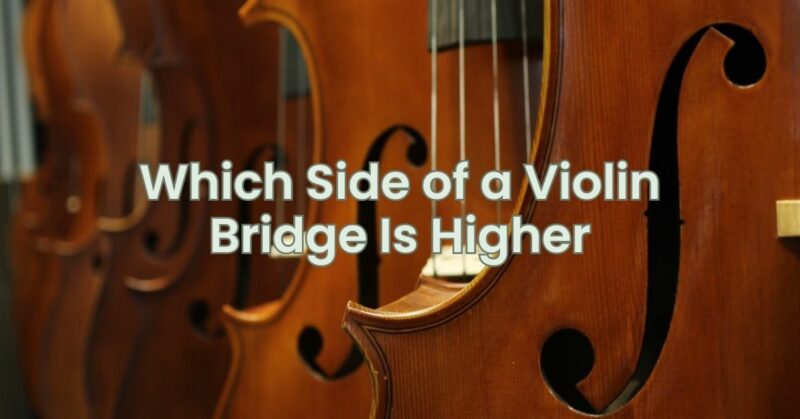The bridge is a crucial component of a violin, transmitting the vibrations from the strings to the soundboard and influencing the instrument’s overall sound quality. When it comes to the height of a violin bridge, there is a slight difference between the two sides. In this article, we will explore the concept of bridge height and explain which side of a violin bridge is typically higher.
- The Role of the Bridge: The bridge plays a vital role in a violin’s tonal production and playability. It supports the strings, allowing them to vibrate freely, and transfers their energy to the soundboard, creating sound resonance and amplification. The height of the bridge directly affects the instrument’s sound projection, playability, and tonal characteristics.
- The Higher Side of the Bridge: When observing a violin bridge, you will notice that one side appears higher than the other. This height difference is intentional and serves specific purposes:
- The higher side of the bridge is typically the side supporting the E string, the thinnest and highest-pitched string on the violin.
- The E string side of the bridge is slightly taller to provide sufficient clearance for bowing the string without touching adjacent strings.
- The higher side helps prevent unintentional contact between the bow and neighboring strings during playing, ensuring clean and accurate bowing technique.
- Achieving Balance: While the height difference is intentional, it is crucial to maintain overall balance and symmetry in the bridge’s placement and adjustment:
- The higher side of the bridge should not be excessively tall, as it can negatively impact playability and cause an imbalance in sound projection.
- The bridge should be properly centered between the f-holes, ensuring equal string spacing and alignment over the fingerboard.
- The overall height of the bridge should follow standard measurements, with the bottom of the bridge feet resting firmly on the violin’s soundboard.
- Achieving proper balance between the higher and lower sides of the bridge helps ensure optimal sound quality, playability, and tonal response across all strings.
- Seeking Professional Assistance: Adjusting the bridge height and ensuring proper balance requires skill and expertise. If you are unsure or encounter difficulties, it is advisable to seek assistance from a professional violin maker or luthier. They have the knowledge and experience to assess and adjust the bridge height according to your instrument’s specific requirements.
Conclusion: When examining a violin bridge, it is evident that one side is higher than the other. This intentional height difference helps provide clearance for bowing the thinnest string (E string) without touching adjacent strings. It ensures clean and accurate bowing technique while maintaining sound projection and tonal balance across all strings. Achieving the correct bridge height and balance is crucial for optimal playability and sound quality. If you are unsure about adjusting the bridge yourself, consulting a professional violin maker or luthier is always recommended to ensure the best outcome for your instrument. With a properly balanced bridge, your violin will produce beautiful tones and offer a rewarding musical experience.


